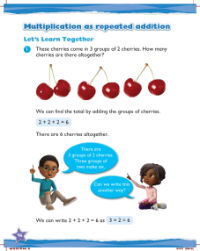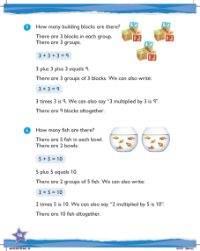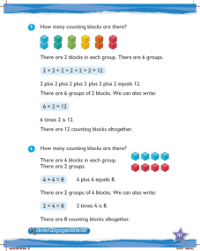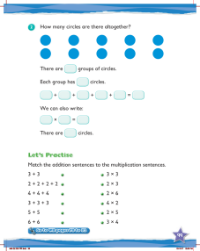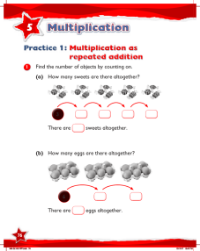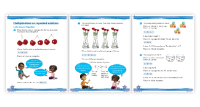Max Maths, Year 2, Learn together, Multiplication as repeated addition (2)
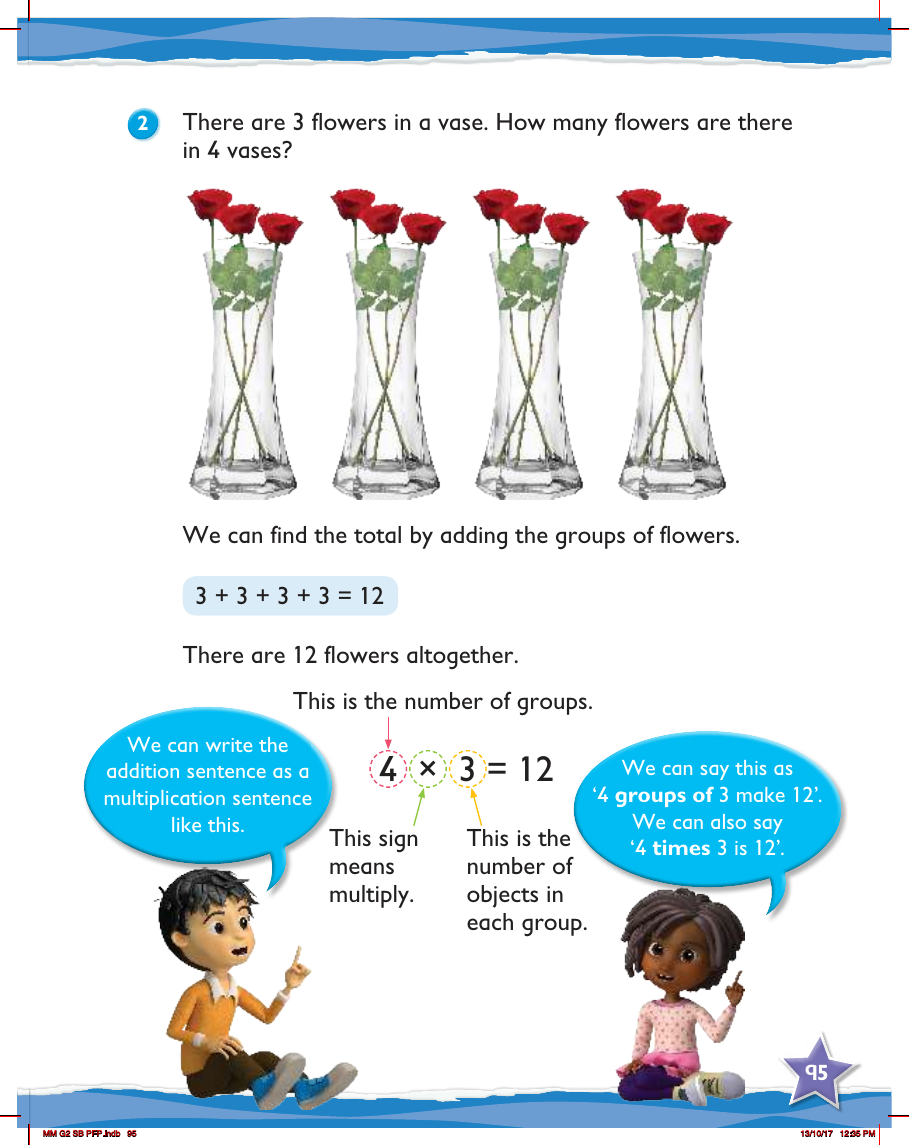
Maths Resource Description
In the Max Maths Year 2 curriculum, children learn about multiplication through the concept of repeated addition. One illustrative example given to the students is a scenario involving flowers and vases. If there are 3 flowers in one vase, the question posed is how many flowers would there be in 4 vases. To solve this, children are encouraged to add the groups of flowers together: 3 flowers in the first vase, plus 3 in the second, 3 in the third, and 3 in the fourth. By combining these groups, the total is found to be 12 flowers altogether.
The lesson then transitions from repeated addition to multiplication, showing that the same result can be achieved more efficiently. The number of vases represents the number of groups, which is 4, and the number of flowers in each vase represents the number of objects within a group, which is 3. By multiplying these two numbers together (4 × 3), the result is the same: 12 flowers. This is expressed in two ways: "4 groups of 3 make 12" and "4 times 3 is 12". The children are taught to convert the addition sentence into a multiplication sentence, demonstrating that multiplication is a quicker way of adding the same number several times.
